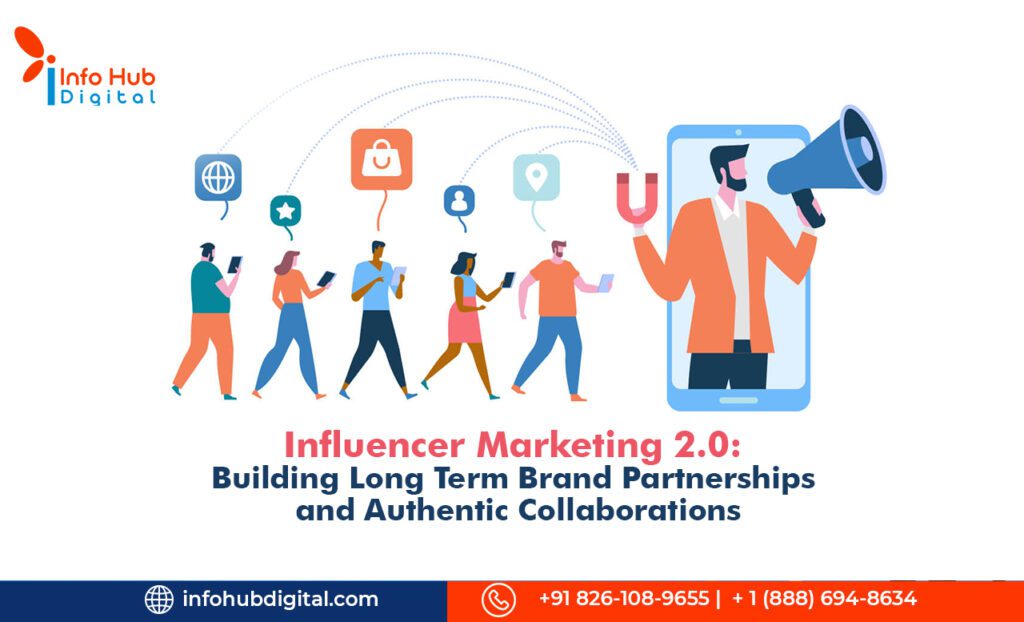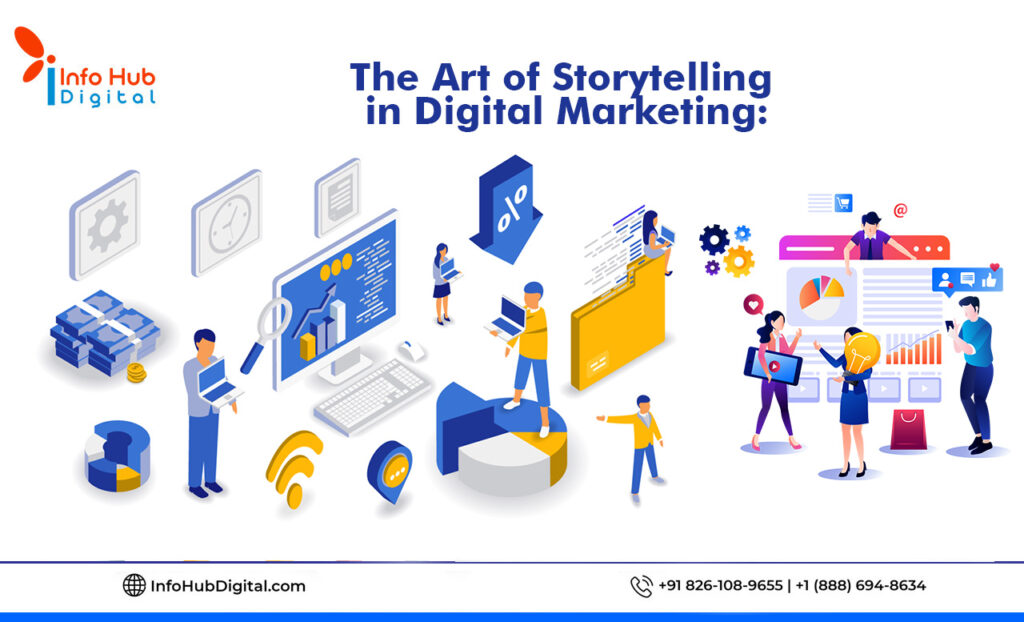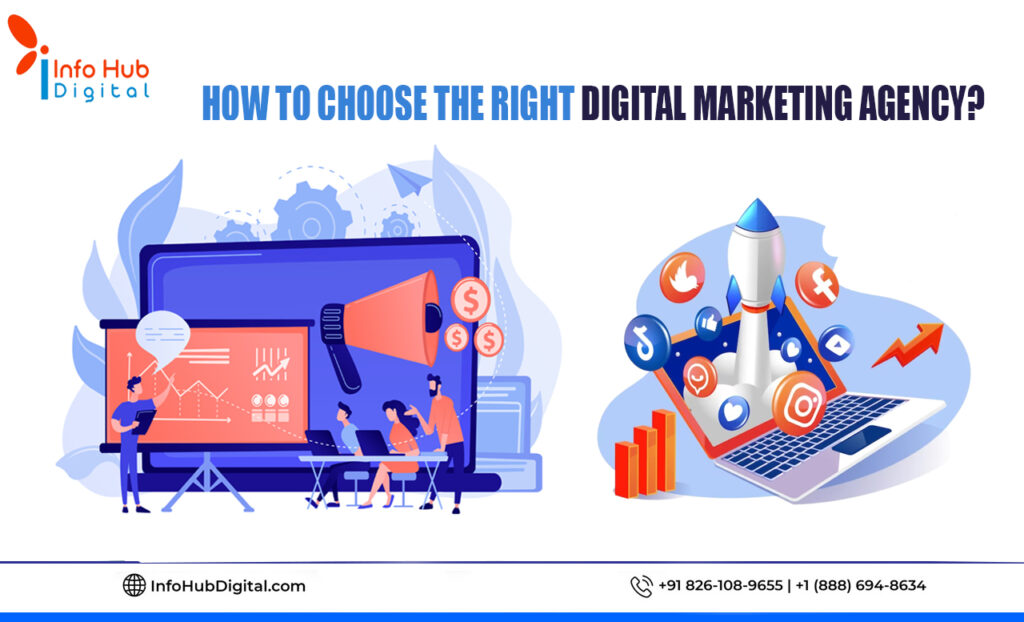In recent years, the landscape of influencer marketing has undergone a remarkable transformation. From its early days of sporadic product endorsements to its present state as a well-established marketing strategy, influencer marketing has proven its effectiveness in engaging audiences and boosting brand awareness. As brands recognize the value of authenticity and genuine connections with consumers, Influencer Marketing 2.0 takes center stage, focusing on long-term brand partnerships and authentic collaborations.
In the midst of this evolution, brands and businesses must grasp the significance of authenticity in influencer collaborations. It is no longer sufficient to partner with influencers solely for their follower count; instead, brands are keenly aware that the real power lies in connecting with influencers who genuinely embody their values and resonate with their target audience.
Table of Contents
Identifying the Right Influencers
- A. Defining Your Brand’s Objectives and Target Audience: The foundation of any successful influencer partnership begins with a comprehensive understanding of your brand’s objectives and target audience. By aligning your campaign with specific goals, you can better identify influencers who can effectively convey your message to the right people. Narrowing down the focus helps ensure that your chosen influencers have the right niche and audience alignment to drive meaningful results.
- B. Utilizing Data and Metrics to Select the Right Influencers: In the age of data-driven marketing, relying on instinct alone is no longer sufficient. Leveraging data and metrics can aid in the selection process, enabling brands to identify influencers with proven track records of engagement and resonance within their niche. Analyzing metrics such as audience demographics, engagement rates, and content performance can guide your decisions and lead to more successful partnerships.
- C. The Role of Micro-Influencers in Long-Term Partnerships: While macro-influencers may have massive followings, micro-influencers can provide unique advantages in long-term collaborations. With smaller, more niche audiences, micro-influencers often boast higher engagement rates and foster stronger connections with their followers. Embracing micro-influencers in your influencer marketing strategy can lead to authentic and impactful campaigns.
Nurturing Long-Term Partnerships
- A. Fostering Genuine Relationships with Influencers: In the realm of Influencer Marketing 2.0, it’s essential to shift from transactional interactions to building genuine relationships with influencers. Treating influencers as partners rather than mere marketing tools can result in more authentic content creation and a deeper emotional connection with their audience. Engaging in open communication, providing support, and showing appreciation for their work can strengthen these bonds over time.
- B. Tailoring Collaborations to Align with Influencers’ Brand Identity : Influencers have spent considerable time and effort curating their personal brand identities, and respecting this is crucial for fruitful long-term partnerships. Collaborations that seamlessly align with an influencer’s authentic persona lead to more natural and relatable content, resonating better with their followers and building trust between the influencer and the brand.
- C. The Power of Co-Creation: Involving Influencers in Product Development: Collaborating with influencers goes beyond one-off campaigns; it can extend into product development. Involving influencers in the creative process not only results in products that cater to the desires of their audience but also solidifies the influencer’s role as an integral part of the brand. Co-creation demonstrates a commitment to shared values and a long-term vision.
Emphasizing Authenticity in Campaigns
- A. The Impact of Transparent and Genuine Content: Authenticity has become the cornerstone of successful influencer marketing in the 2.0 era. Today’s savvy consumers can easily detect inauthentic content and quickly disengage from brands that prioritize sales over genuine connections. Transparency in sponsored posts and brand partnerships fosters trust and strengthens the influencer’s credibility, ultimately leading to more impactful campaigns.
- B. Balancing Brand Messaging with Influencers’ Creative Freedom : Finding the right balance between brand messaging and influencers’ creative freedom is an art that brands must master. Influencers are experts in creating content that resonates with their audience, and overly restrictive brand guidelines can stifle their creativity. Allowing influencers the freedom to infuse their unique voice into campaigns can lead to more engaging and persuasive content.
- C. Leveraging User-Generated Content for Enhanced Authenticity: Encouraging user-generated content (UGC) as part of your influencer strategy enhances authenticity and fosters a sense of community around your brand. UGC not only showcases real-life experiences with your products or services but also strengthens the bond between influencers and their followers. By amplifying UGC, brands can create a ripple effect of genuine endorsements.
Measuring Success and Performance
- A. Beyond Vanity Metrics: Focusing on Meaningful KPIs: Moving beyond vanity metrics like follower counts and likes, brands must focus on meaningful key performance indicators (KPIs) that align with their campaign objectives. Metrics such as click-through rates, conversion rates, and audience sentiment provide valuable insights into the effectiveness of long-term influencer partnerships.
- B. Analyzing the Long-Term Impact of Influencer Partnerships : Understanding the long-term impact of influencer collaborations requires a comprehensive analysis of both short-term and ongoing results. By continuously tracking performance and engagement over time, brands can refine their strategies and optimize their partnerships for maximum impact.
- C. Case Studies: Successful Long-Term Influencer Collaborations: Examining real-world examples of successful long-term influencer collaborations provides valuable insights into the strategies that work best. Case studies highlight the challenges, benefits, and outcomes of these partnerships, serving as valuable references for brands embarking on their own Influencer Marketing 2.0 journey.
Mitigating Risks and Challenges
- A. Dealing with Influencer Controversies and Reputational Risks: Influencer partnerships come with inherent risks, such as potential controversies or reputational issues. Brands must be prepared to handle such situations with sensitivity and a crisis management plan. Clear communication and alignment on values from the beginning can help mitigate these risks.
- B. Legal and Contractual Aspects of Long-Term Partnerships: Long-term influencer partnerships necessitate robust and comprehensive contracts that protect both the brand and the influencer. Legal aspects, such as content ownership, exclusivity, and disclosure requirements, must be carefully considered to ensure a smooth and compliant collaboration.
- C. Handling Influencer Burnout and Fatigue: Influencers, especially those involved in long-term partnerships, may experience burnout or creative fatigue. Brands should be attentive to the well-being of their influencers and offer support when needed. Periodic breaks and novel approaches to content creation can reinvigorate collaborations and maintain authenticity.
The Future of Influencer Marketing
- A. Incorporating New Platforms and Trends: As the digital landscape evolves, new platforms and trends emerge that can revolutionize influencer marketing. Brands must stay agile and adaptable, exploring innovative avenues to connect with their audience authentically.
- B. Evolving Consumer Expectations and Trends: Consumer expectations continually shift, influencing the way they interact with influencers and brands. Staying attuned to these changes enables brands to craft relevant and impactful influencer campaigns that resonate with their audience.
- C. The Role of AI in Influencer Marketing 2.0: The integration of artificial intelligence (AI) in influencer marketing presents exciting possibilities for efficiency and effectiveness. From influencer discovery to content analysis, AI-powered tools offer valuable assistance in streamlining influencer marketing efforts.
Conclusion:
Influencer Marketing 2.0 marks a significant shift from one-off endorsements to building meaningful and long-lasting brand partnerships. Embracing authenticity, fostering genuine relationships, and involving influencers in the creative process lie at the core of this transformative approach. Brands that identify the right influencers and align their campaigns with the influencer’s unique identity can craft more engaging and impactful content.
While challenges exist, such as mitigating risks and handling influencer burnout, these can be addressed with thoughtful planning and clear communication. Emphasizing meaningful metrics over vanity indicators allows brands to measure the true impact of their collaborations accurately.
The future of influencer marketing is dynamic, with emerging platforms, evolving consumer expectations, and the integration of AI offering exciting possibilities for brands to stay ahead. As we continue to push the boundaries of Influencer Marketing 2.0, Info Hub Digital remains committed to helping brands foster authentic and successful long-term partnerships. Contact us today for the best Influencer Marketing services provider agency in India and the USA, and embark on a journey of genuine brand growth and audience connection.







